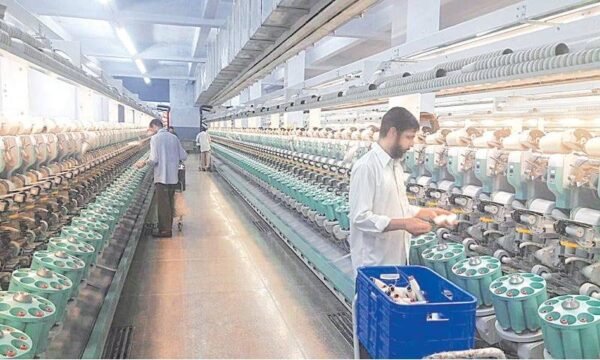LSM sector shows impressive growth rate

03 January 2024
Published in: The Nation
Large-Scale Manufacturing (LSM) sector has shown a significant rise in the growth rate as of November 2023 compared to the previous month, leaving analysts flabbergasted, reports WealthPK.
According to the recent data released by the Pakistan Bureau of Statistics (PBS), as of November, there is a year-on-year growth rate of 1.59 percent and a month-on-month increase of 3.63 percent compared to October 2023.
Talking to WealthPK, Joint Secretary of Finance and Production Jameel Ahmed Khan said the LSM output had seen a significant rise, contradicting the negative trends documented in the December Update and Outlook 2023 on the Finance Division website.
“The October 2022 figures showed a negative 1.40 percent, escalating to a shocking negative 4.08 percent in October 2023, representing a staggering 191 percent increase in negativity.
Further scrutiny reveals a negative 1.67 percent from July to October 2022, improving to negative 0.44 percent in the same period of the current fiscal year,” he added.
Jameel Ahmed highlighted that despite this plunge, the December 2023 Monthly Update hinted at potential recovery in the industrial sector, citing positive trends in high-frequency indicators.
Unfortunately, the specifics of these indicators remain undisclosed, leaving room for speculation.
The July-November 2023 LSM growth reflects a negative 0.80 percent, indicating an 82 percent rise in negativity when compared to the negative 0.44 percent growth rate from July to October.
Inexplicably, the automobile sector, as per PBS, registered a negative 66.07 percent in November 2023, surpassing the negative 52.93 percent from July to November 2023. Strikingly, this negative trend is paradoxically cited as an item that experienced growth.
He emphasized that as pressure mounts for economic leaders to showcase improvements in macroeconomic indicators, inconsistencies in data become increasingly apparent.
Former Finance Minister Hafiz Pasha raised concerns over the textile sector and apparel industry, highlighting a significant decline in the output of cotton yarn and cloth, despite reported growth in garment production.
Moreover, data from the International Monetary Fund (IMF) reveals a 2.3 percent change in private sector credit for 2023 compared to the 2022 figure of 17.4 percent. Projections indicate a 5 percent rise this year, posing a challenge amid the government’s reliance on unbudgeted domestic borrowing, potentially crowding out private sector credit.
In light of these discrepancies, there is a call for state-operated data-gathering entities to ensure the integrity of their statistics.
Accurate and reliable information is crucial for informed executive decisions that can mitigate potential negative consequences.





